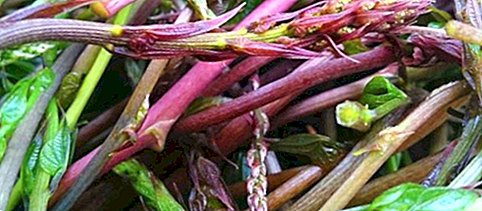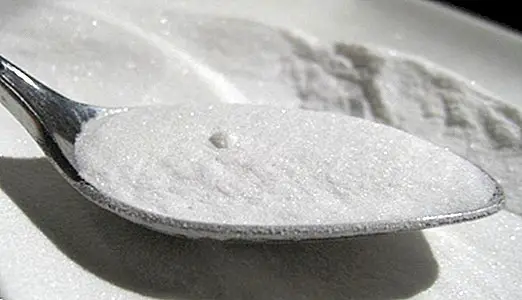Benefits and properties of wild asparagus (wild)

What are wild asparagus?
Under the name of 'Wheat asparagus' we find a wonderful food, full of benefits and purifying and diuretic properties, which stands out especially for its tremendous nutritional richness and also for its low caloric content. Basically consists of a bud bud or elongated shape, edible, whose color is green.
It is, incidentally, a food habitually confused with the green asparagus, mainly because from an external point of view its appearance is usually quite similar, although there are differences that can help us differentiate them easily.
While the green asparagus is a variety of asparagus coming directly from the crop, which grows in contact with sunlight, which allows the chlorophyll to develop normally on the outside, a substance that ultimately is the "culprit" of having said coloration. However, we could say that Wild asparagus is a variety of green asparagus that grows wild.
Although today we can find green and wild asparagus throughout practically the whole year, it is more usual to find wild asparagus especially at the beginning of spring. In addition, we also find differences in their appearance, since the green asparagus tends to be finer than green.

What are the benefits of wild asparagus?
It is an ideal time to enjoy the wild asparagus, since they grow with the late winter sun, and have a really low caloric value, since their main constituent is water, in approximately 90%, being ideal for example in slimming diets, at the time of eliminate toxins and of avoid fluid retention.
The importance of the wild asparagus is such that it helps to maintain precisely the line thanks, as we have indicated, to its scarce contribution of calories and its high fiber content. It also has a type of soluble fiber, called cellulose, with equally interesting benefits if you have problems going to the bathroom normally.
For example, they provide interesting amounts of fiber, proteins, trace elements and minerals (such as potassium, chromium, zinc, calcium, magnesium and phosphorus) and a good amount of vitamins (such as vitamin A, C, E, K, B1, B2). , B3, B6 and folic acid or B9).
Precisely because of its fiber content it becomes a naturally ideal option to improve intestinal transit, thanks to the fact that it mainly has insoluble fiber, which has a certain laxative effect. In this way, it helps in a positive way against constipation (both in its treatment and in its prevention).
However, if there is a highly known - and recognized - quality of the wild asparagus is its tremendous capacity to help us clean and purify the blood. This is due to its richness in water and different compounds and substances with diuretic capacity, for its high content of potassium, while it is ideal to combat fluid retention.
They are good for strengthening the mind and for the nervous system due to its high content of B vitamins, and they become an extremely interesting food in weight loss diets, due to its great depurative capacity, and its low fat and caloric content .

Nutritional information of wild asparagus
100 grams of wild asparagus provide:
| Energy (kcal) | 25 |
| Carbohydrates (g) | 2 |
| Proteins (g) | 2.9 g |
| Fat (g) | 0.6 |
| Fiber (g) | 1.7 g |
| Water (g) | 92.8 g |
| Calcium (mg) | 27.7 |
| Potassium (mg) | 207 |
| Sodium (mg) | 3 |
| Copper (mg) | 0.08 mg |
| Selenium (μg) | 1 |
| Iron (mg) | 1.3 |
| Magnesium (mg) | 12.5 |
| Phosphorus (mg) | 59 |
| Zinc (mg) | 0.51 |
| Vitamin A (μg) | 26.66 |
| Vitamin B1 (mg) | 0.12 |
| Vitamin B2 (mg) | 0.11 |
| Vitamin B3 (mg) | 1.5 |
| Vitamin B5 (mg) | 0.17 |
| Vitamin C (mg) | 21.6 |
| Vitamin E (mg) | 2 |


